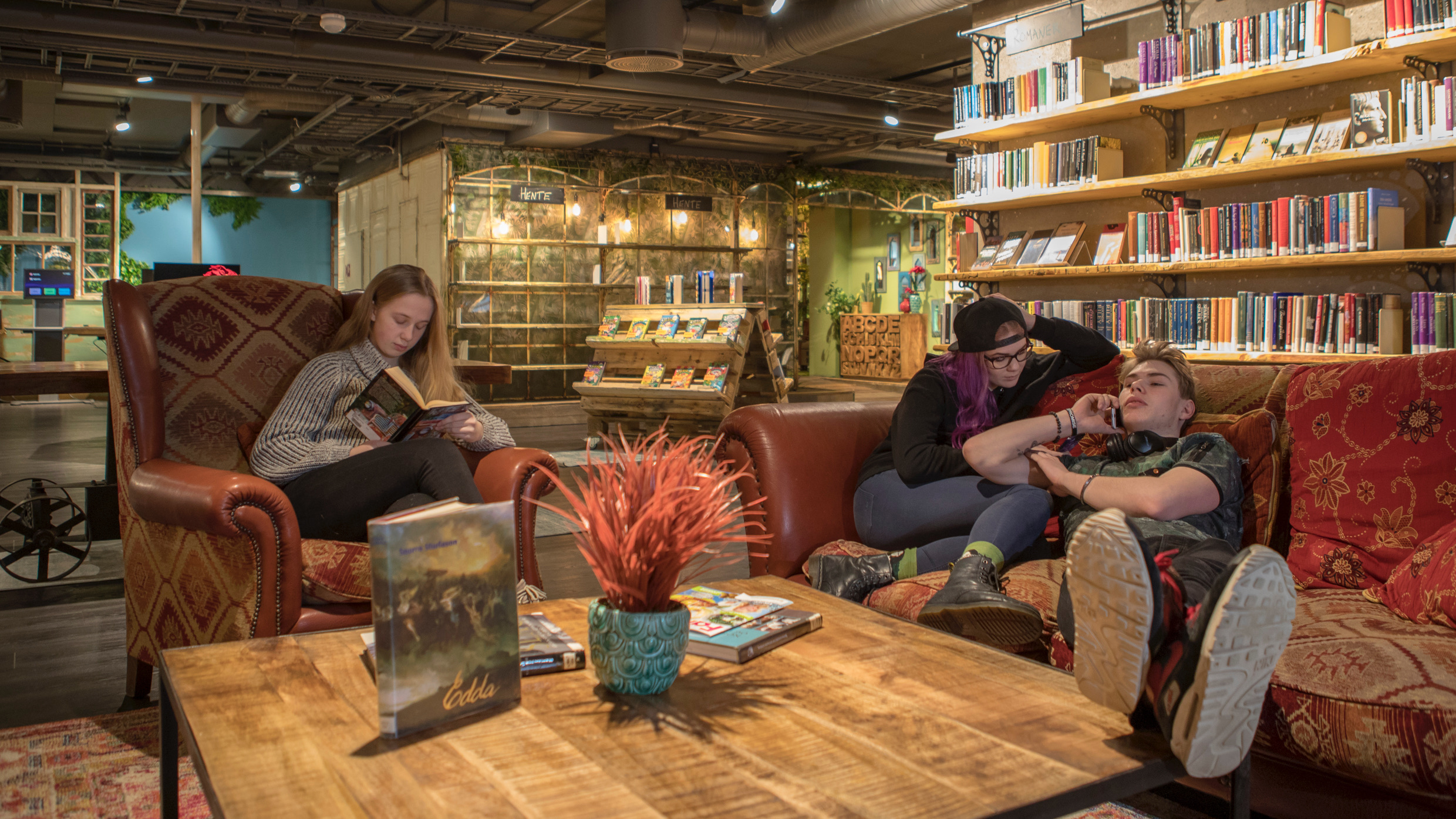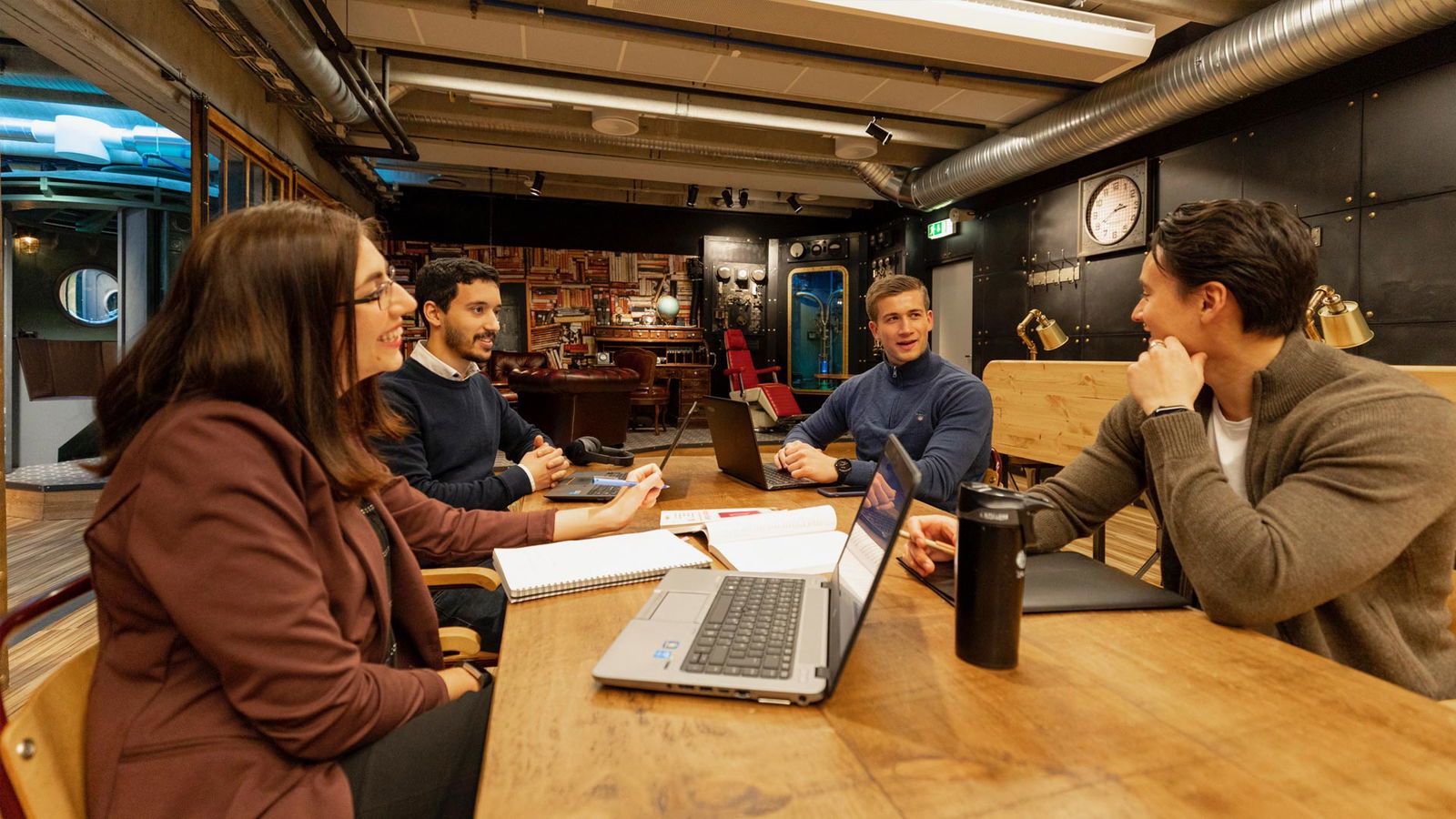Research on the effects of third place experience design
Libraries have proven to be the best book archives in the world, collecting magnificent specimen to be looked at or lent out to those who have access. Their contribution to the higher levels of the pyramid known as Maslow’s Hierarchy of Needs has always been highly appreciated; libraries enabled people to reach self-actualization and gain esteem. With the arrival of the internet and knowledge being available to all, the institutional role of the library has begun to shift and turn somewhat old-fashioned. People no longer rely on a library for self-actualization, they have access to knowledge on their phones.
Some of the cultural institutes that libraries are known to be are open to change. With Maslow in mind, they are shifting to more elementary needs and playing a new key role in modern society. Being both a physical and social place, they are able to address another level of Maslow’s pyramid – they provide people with a sense of belonging.
The question is: do libraries play a more social role in modern society?
We think they do. To prove this, in spring 2019 we reached out to 20 libraries that we worked with in the past three years. These projects in Norway, Germany and the Netherlands, underwent big physical changes and are either remakes, renovations or remodels of existing libraries. We sent them a questionnaire with questions such as:
- When you are looking at the current visitors to your library, do you see an increase in people that come just to be in your library?
- Are the current visitors more or less involved with the library and the activities than before (re)opening?
In other words: we wanted to find out what people were doing in a library nowadays.
You might wonder why we as a service provider would like to know this. For us, it is essential to understand the impact our work has on libraries, organizations, communities, and individuals. It is important to be aware of libraries’ role in society and the impact they can have on personal lives. Facts act as a solid foundation to help you trust that you are doing the right thing. At includi, we truly believe libraries can shape this change in their social role by providing belonging.
If our assumption proves to be correct, this is a big step in the creation of new third places. It will provide evidence that we can create places where people feel welcome and that there is a growing need for these places. We can help an entire industry branch, which is looking for a new function in a society with a decreasing need for information, through reenvisioning institutes such as libraries. Through programming and experience design we would actually be able to create a social cement that binds people, organizations and small entrepreneurs and give them a reason for existing.
The outcomes are promising
The results of the questionnaire show us optimistic numbers. For instance, after opening, 73% of the respondents see more people come to their place just to be and hang out. This means that the venue attracts new visitors who were not visiting the library at all in its prior form. In some libraries, the visitor numbers increased by an unprecedented 400%.91% of libraries experienced an increase in visitors, which has also have become ‘more diverse’ for 55% of these cases. And different social groups ‘mingle more often than before’ (91%).
We also asked about programmability. Despite the fact that 64% of visitors come alone to the library, all of them are ‘a little more’ (36%) to ‘a lot more’ (64%) involved in library activities, which is 82% of cases are organized by users themselves. A great example: Oslo-based library Deichman Tøyen hosts a staggering 82 activities a month – all organized by its users. That is almost 1,000 events per year – in a venue of only 600 square meters. Users do indeed become resources, as the Danish architect Ivar Moltke once said.
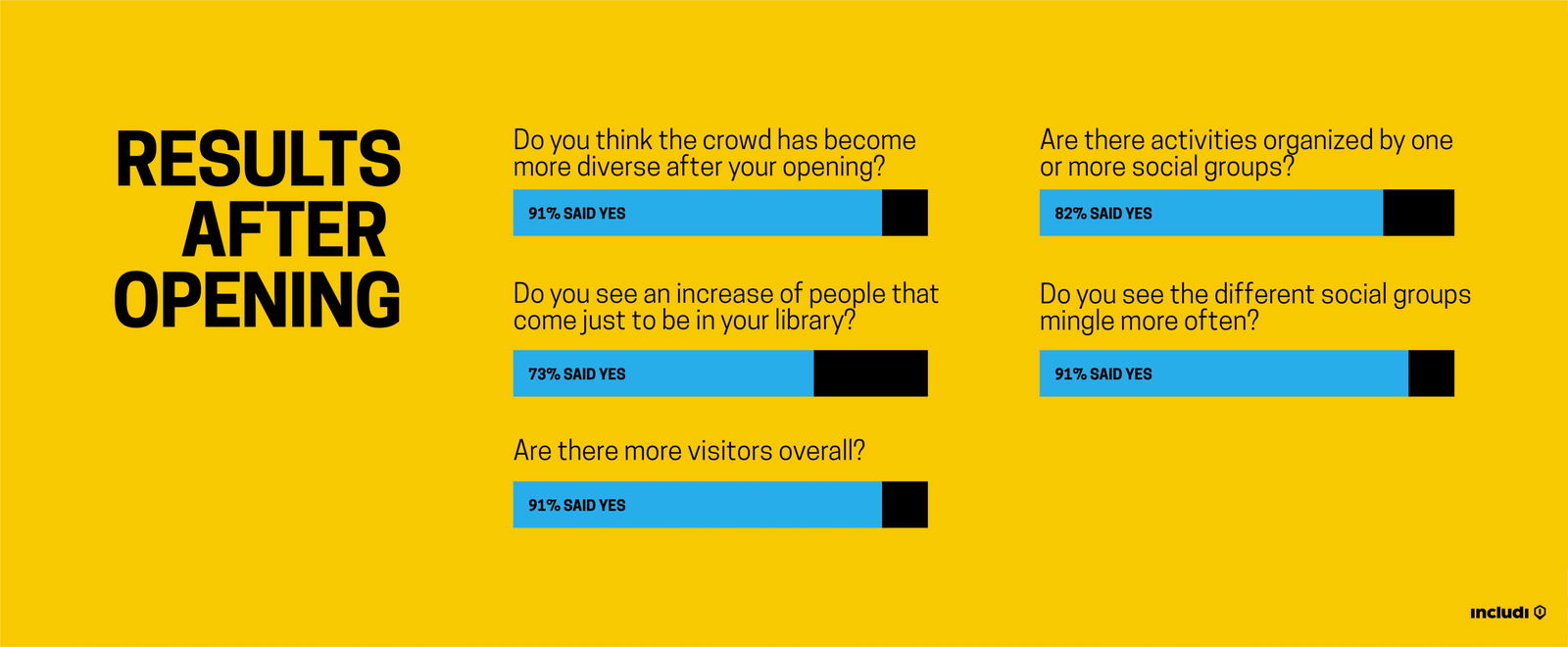
Equal amount of books but more people
Although the number of visitors grew noticeably, the total number of lends stayed behind. This indicates that the new visitors don’t necessarily come for the books. They are attracted by something else. In the new venue, people mingle, take part in more activities and organize their own. Possibly the Design for Programmability concept inspires people to take part and own the place more than before.
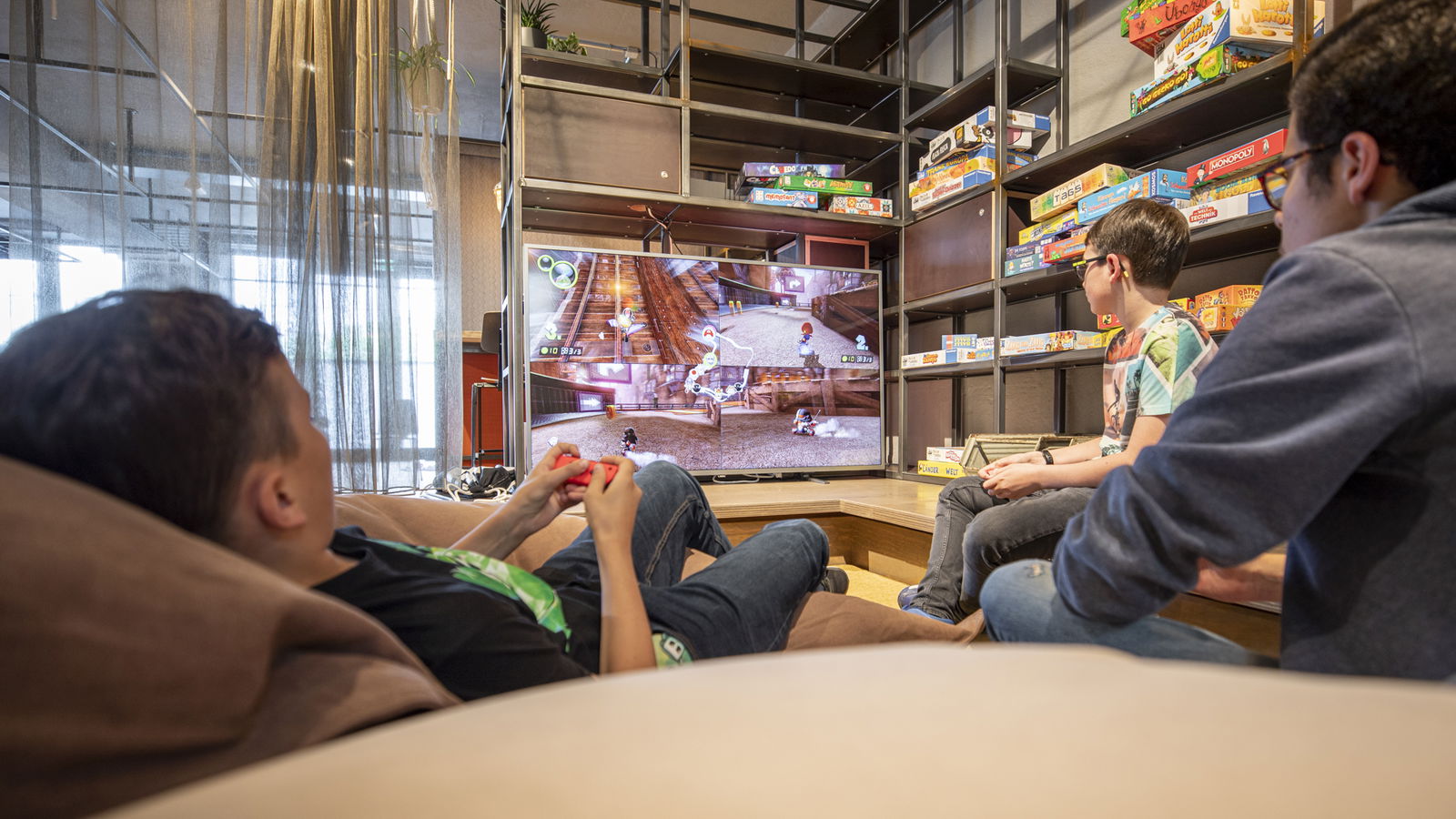
Time well spent as a sign of belonging
In the new libraries, the average stay increased after (re)opening day. Almost 72% of visitors stayed between 30 minutes to an hour. This can be seen as a sign that people feel welcome, and enjoy their stay. They have a sense of belonging.
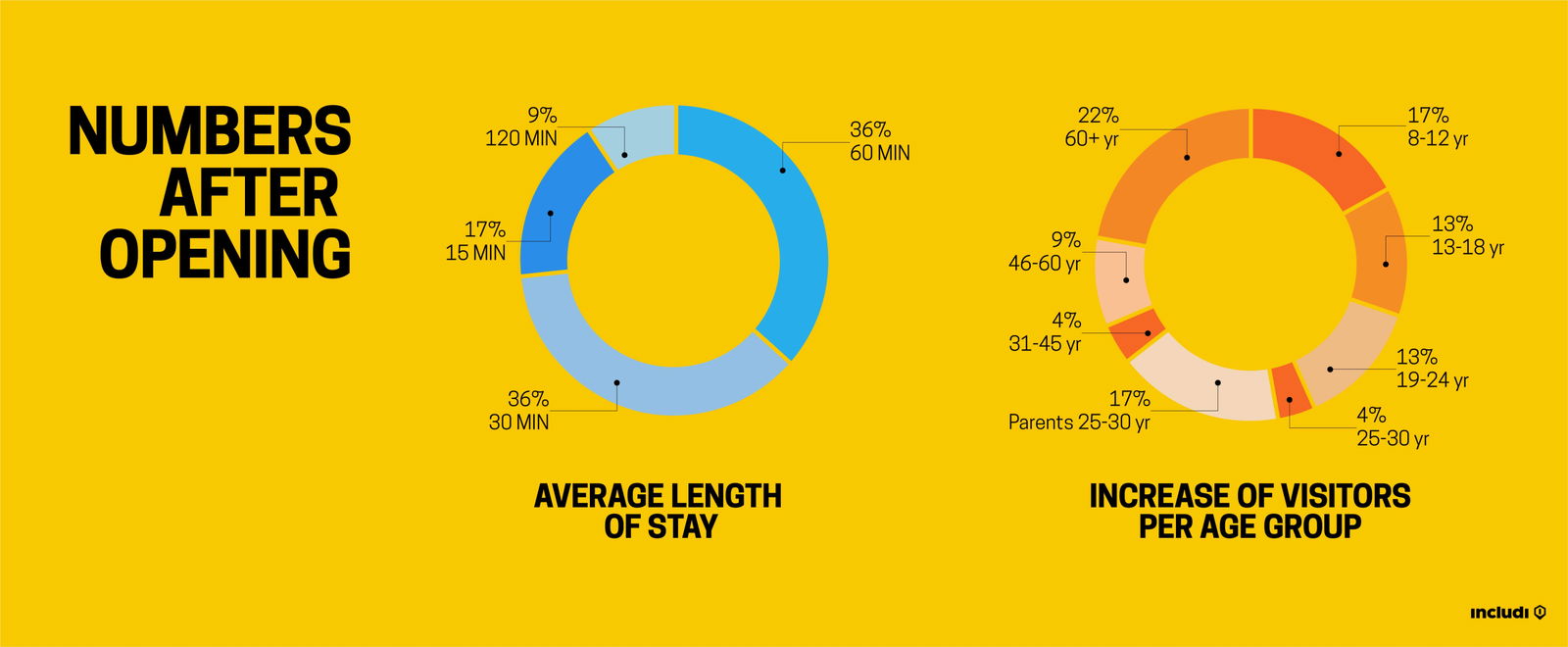
Attracting new groups
Libraries with a possible new social role tend to attract even the most difficult target groups to your venue and allow them to enjoy their stay. The participating libraries saw an increase in visitors aged 12 to 18 and 18 to 24. They seem to unexpectedly mix well with the increase in older visitors (60+).
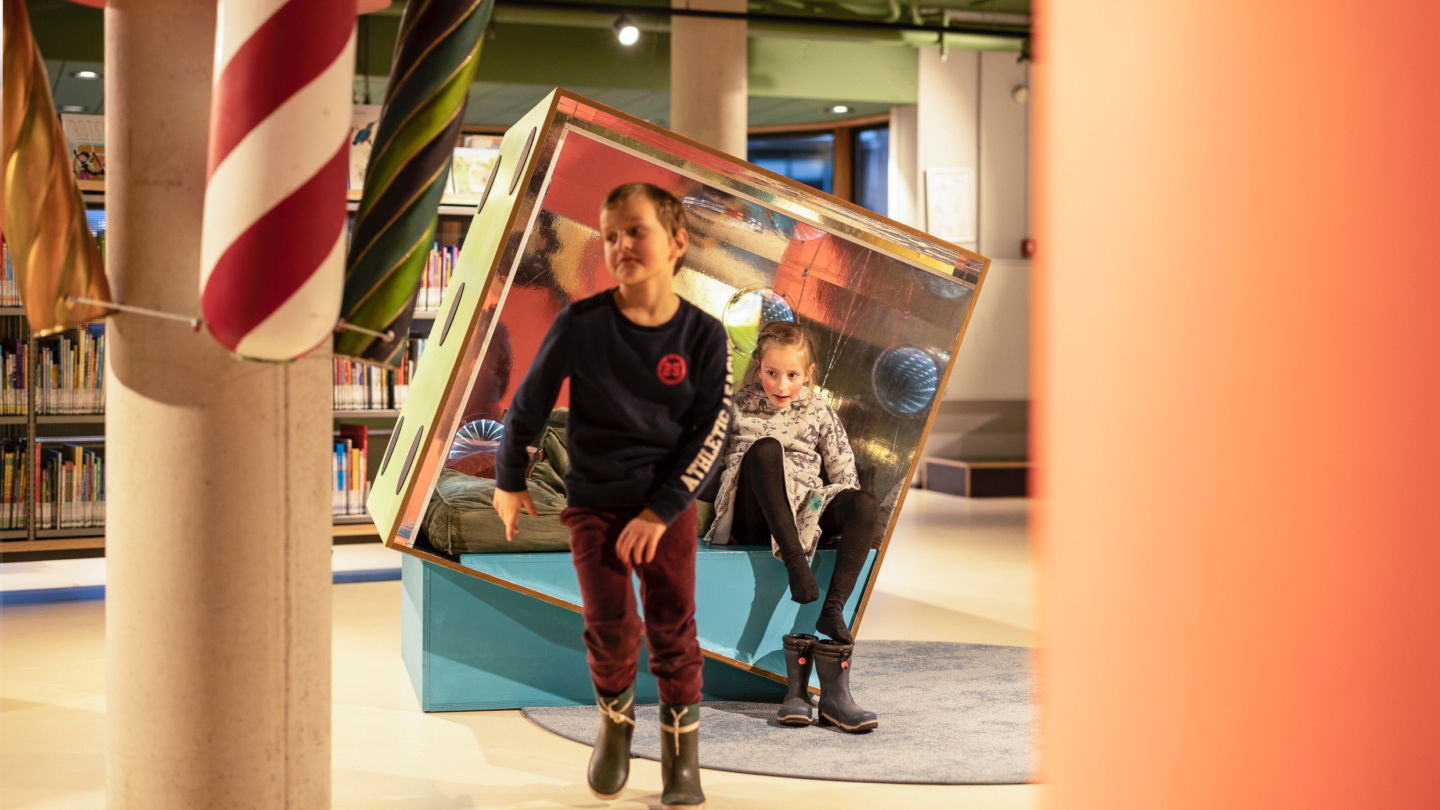
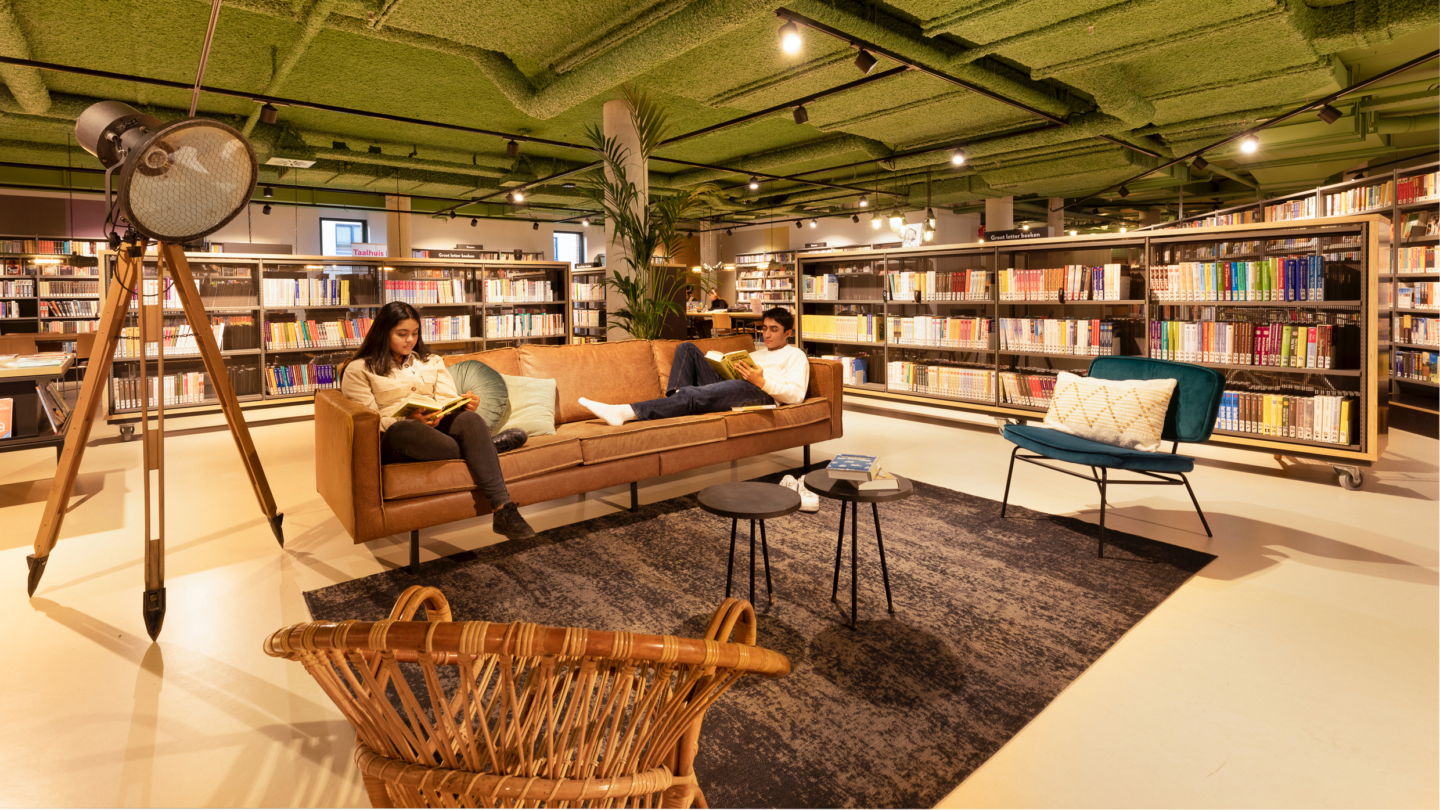
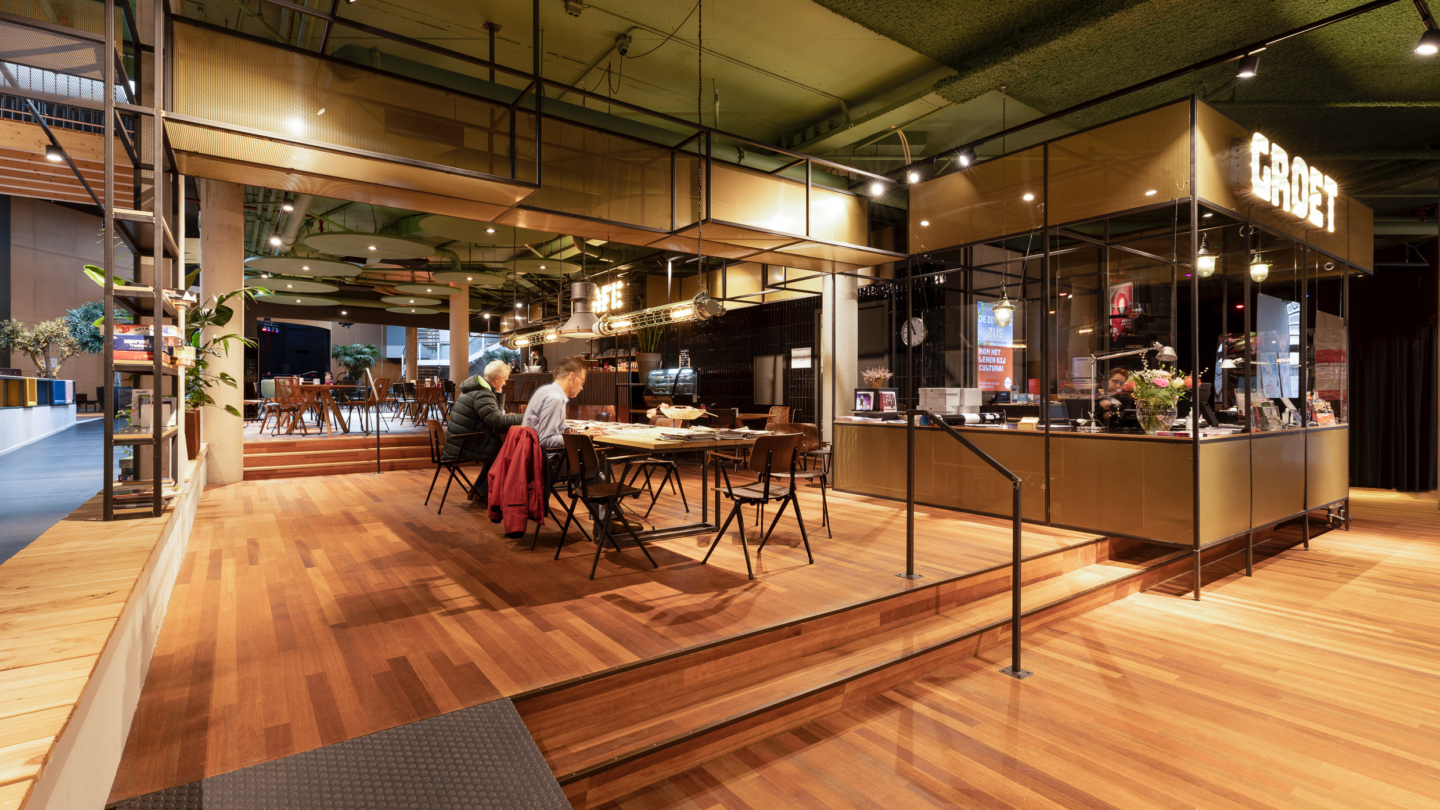
Conclusion
Though this unofficial investigation consisted of a small sample of libraries, the outcome nonetheless shows a clear shift to a more social role for the library in modern society. After a makeover to a third place, more visitors find their way to the library, enjoy the venue, and actively take part in program components.
We might even carefully conclude that by offering a sort of home, along with experiences and a feeling of belonging for visitors, a third-place library touches on many levels of Maslow’s pyramid. Meeting these fundamental human needs broadens the social relevance of libraries and sheds light on their impact on society.
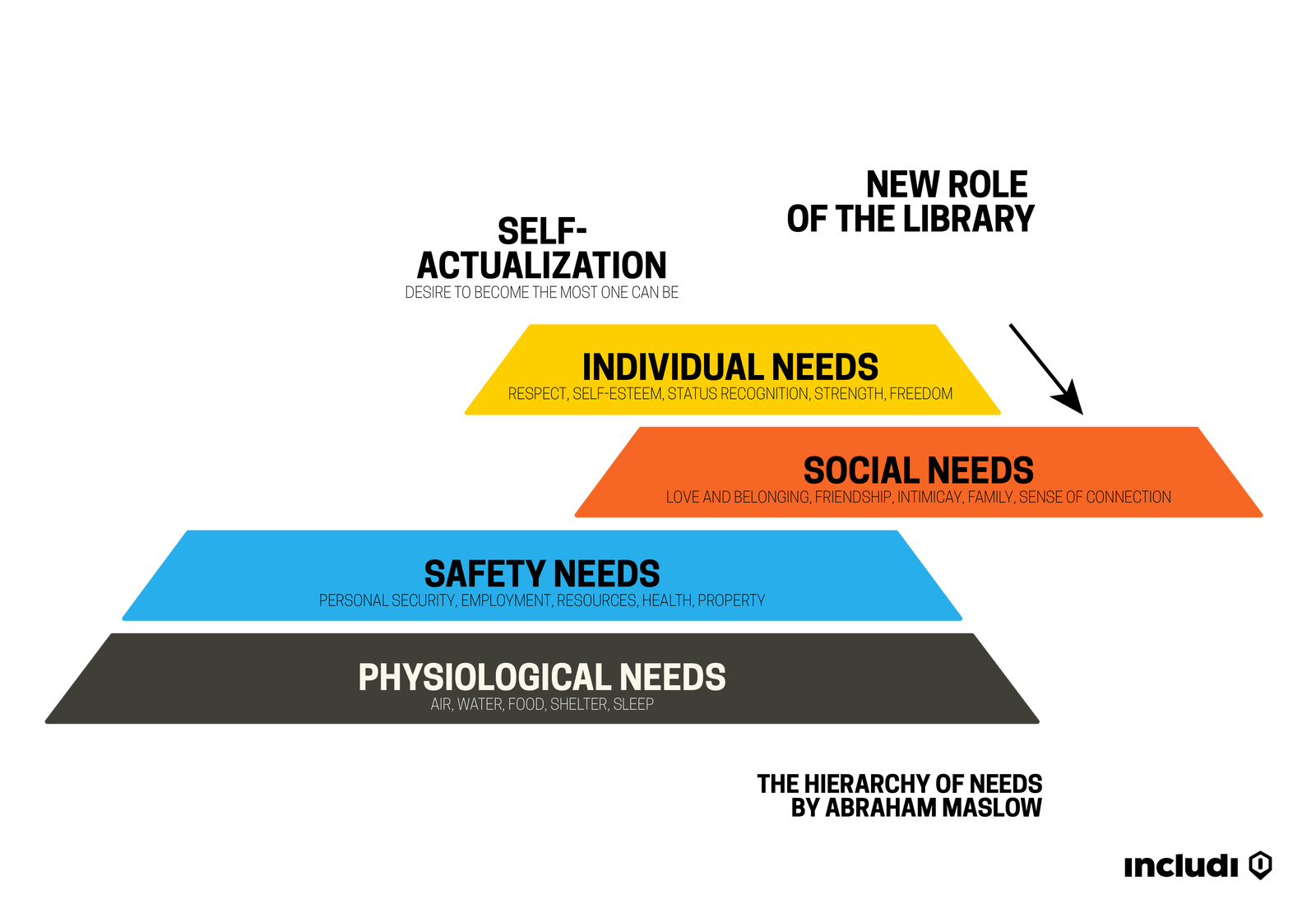
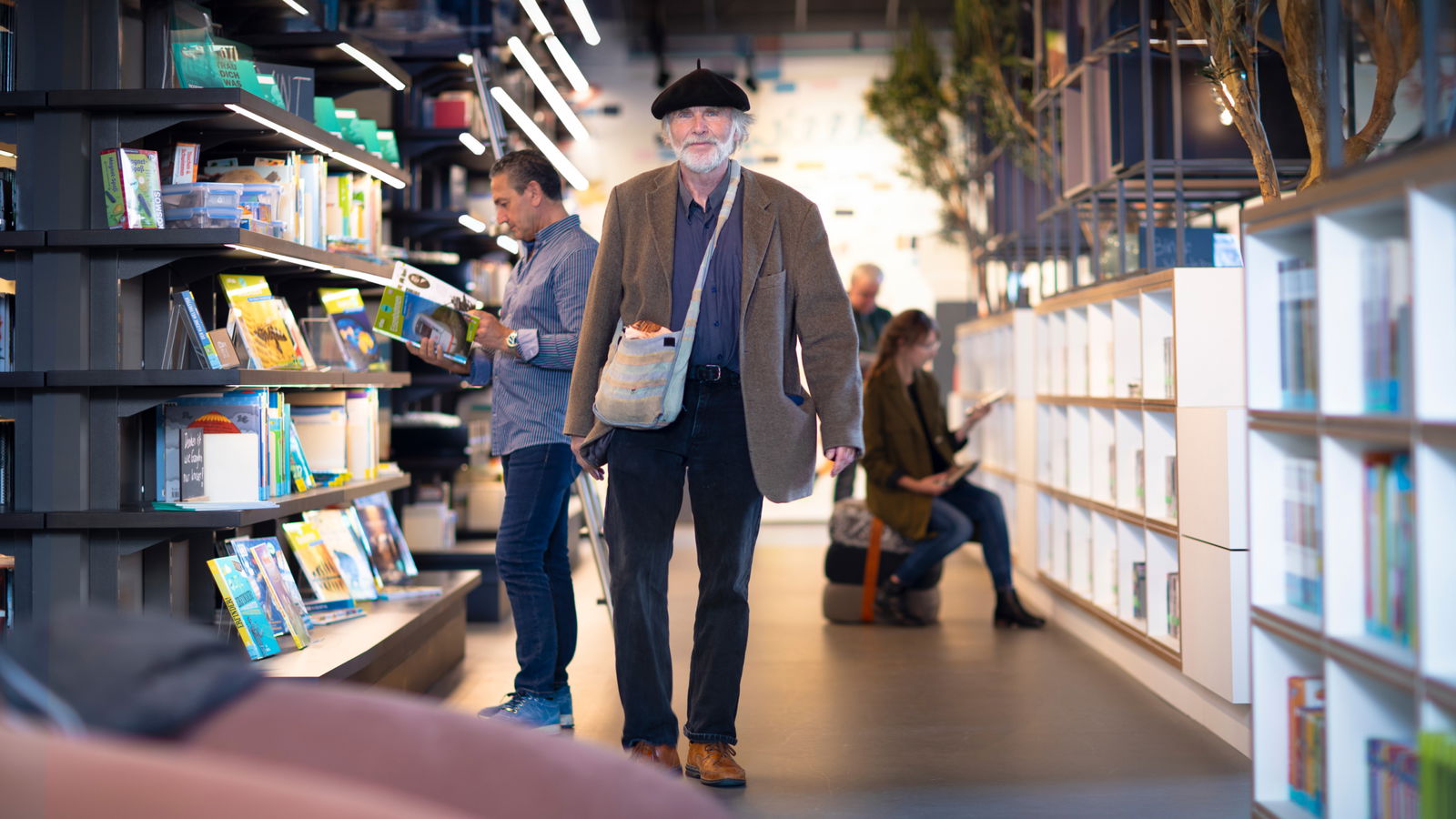
Trouble With Institutions? Good News – You’re Making Progress
